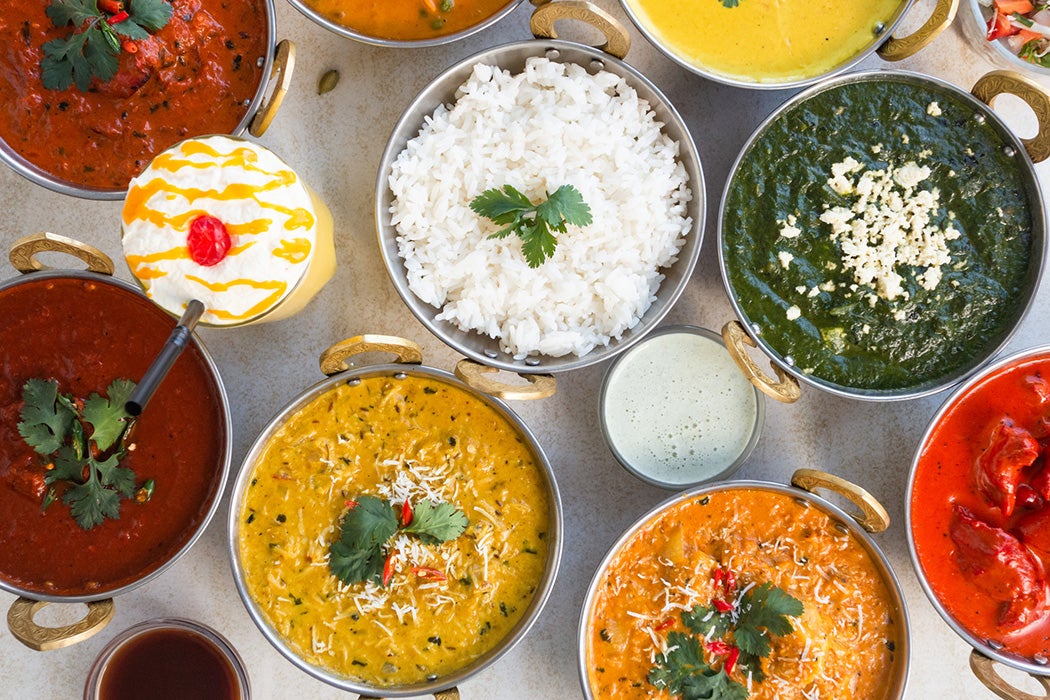If you’ve had a hometown dish while abroad, you might have thought, It’s just not the same here. But missing familiar cooking goes beyond simple food cravings. It’s also a way of tapping national identity, according to Anita Mannur’s analysis of “the deep nostalgic investment in considering certain types of food to be authentically, and autochthonously, ‘Indian’” in fiction, memoir, and cookbook writing about South Asian immigrants’ gastronomic habits in North America.
Reading Madhur Jaffrey’s An Invitation to Indian Cooking, Sara Suleri’s memoir Meatless Days, and two short stories by Shani Mootoo, Mannur suggests that cooking lets immigrants feel connected to “the homeland as an unchanging and enduring cultural essence”—even when that culinary culture is imaginary or more diverse than nostalgic chefs want to let on.
Diasporic immigrants prize “Indian” food not for “any independent intrinsic value as comestible,” but for its status as “symbolic connection to an articulation of national identity,” she writes.
“For voluntary exiles and immigrants such as Jaffrey, culinary culture is associated with ‘feelings’ which take on monolithic and mythological proportions,” Mannur argues. In fact, the nostalgic value that they ascribe to Indian food has been made possible only through the act of emigration, and “can only exist once she has left the physical borders of India.”
In certain cases, culinary nostalgia also plays host to a “logic of hegemonic Indianness” that elides regional and linguistic diversity, alternative histories of “Indianness,” the gendered nature of domestic work, and the laborers who carried out the home-style cooking that some immigrants so fondly remember, such as in Suleri’s childhood in Pakistan.
Precisely because immigrants are far from home, food also accrues an enhanced nationalist meaning. For example, Mannur argues that Jaffrey’s iconic cookbook is partly addressed to “an audience of responsible and ‘patriotic’ Indians in the United States who care enough about their nation’s culinary image to portray an ‘authentic’ version of Indianness in the space of their home.”
Meanwhile, the Indo-Trinidadian narrator of Mootoo’s short story “Out on Main Street” and a sweetshop owner, who is a Fijian immigrant of Indian descent, tussle over “competing notions of ethnic authenticity and national legitimacy” when they cannot agree on the proper name for what the narrator calls “sugarcake,” and the shopkeeper, “chum-chum.”
Weekly Newsletter
Mannur calls food “a potent symbol” for Asian American identity, including in literature. Despite what she saw in 2007 as a scarcity of “paradigms to navigate the relevance of food in Asian American and Asian migrant psychic and material lives,” more recent publications include Wenying Xu’s Eating Identities; Mannur’s book-length Culinary Fictions; the collection Eating Asian America, which Mannur co-edited; and Mark Padoongpatt’s Flavors of Empire.
Abiding interest in Asian American foodways aptly illustrates Mannur’s observation that, “[w]ithin the tradition of immigrant literature, culinary discourse sets in motion an extended discussion about the imbricated layers of food, nostalgia, and national identity.”
Support JSTOR Daily! Join our new membership program on Patreon today.







